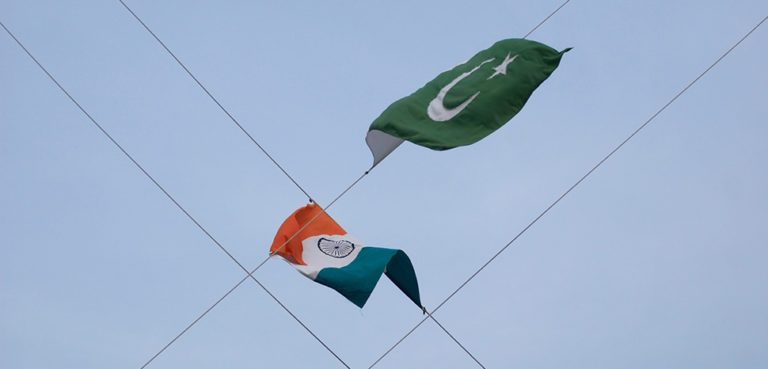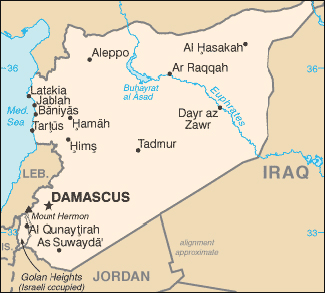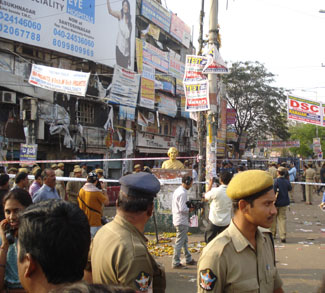In recent times, one has witnessed an uptick in India centric propaganda by Al Qaeda and the Islamic State, targeting various southern states. Official and unofficial media outlets of both Al Qaeda and the Islamic State have been doling out messages and posters in various Indian languages, such as Tamil, Malayalam, Telugu, and Kannada. This rapid rise in propaganda by these groups not only targets potential Indian sympathizers but also reflects competition against each other for such recruits. And interestingly, the propaganda has increased after the fall of Sheikh Hasina’s government in Bangladesh, possibly indicating that elements linked to Al Qaeda and the Islamic State may be regrouping in Bangladesh. Given the chaos in Bangladesh, rise of these extremist elements pose a grave threat to both India and the regional security.
Propaganda Blitz
O Kufr of Hind, slaughtering you is easier for us than slaughtering a cow, warns an Islamic State’s poster, threatening Indians in various Indian languages such as Hindi, Tamil, Telugu, to name a few. While this is not the first time the Islamic State has threatened terrorist attacks in India, especially South India, the fact that this message was translated into various Indian languages appears to be a staging post for future recruitments in India. Al Isabah Foundation, the unofficial media outlet of the Islamic State, has been circulating these messages in various Indian languages such as Tamil, Malayalam, Hindi, Urdu. In recent times, the Al Isabah Foundation has added Telugu and Kannada to its repertoire, bringing the entire South of India in its crosshairs. In November 2024, another media outlet, linked to the Islamic State Al Jauhar Media (which has given a Bayah oath of allegiance to the Amir of Islamic State in August 2023) called for articles to be published in English and Indian languages for its 5th edition of Serat Ul Haq magazine, published in December 2024.
Unofficial media outlets such as Al Isabah Foundation and Al Jauhar Media, linked to the Islamic State, appear to have renewed efforts to instigate sympathizers in India to take to jihad. For instance, one Islamic State poster titled “O Muslims of India” calls on Indian Muslims to take to jihad, stating: “You need to understand that Hindus are united against us. They are the enemies of Allah and our Prophet (sic).” Additionally, Al Isabah Foundation has given a clarion call for Ghazwa-e-Hind (the prophetic holy war against India). In a message titled “Preparation of Ghazwa-e-Hind,” released by Al Isabah Foundation, displays a map of India, encircled by various Islamic State Wilayahs (provinces) such as Wilayah Pakistan, Wilayah Khurasan, Wilayah Kashmir (referring to Indian administered Jammu & Kashmir), Wilayah Bangladesh, Wilayah Sri Lanka, and Wilayah Maldives.
On the other hand, Al Qaeda’s Indian Subcontinent arm, Al Qaeda in the Indian Subcontinent (AQIS) has been publishing India centric messages and articles. Though Al Qaeda has been known to publish in various Indian languages (Tamil, Bengali and Hindi) since 2017, its India centric propaganda now appears to have widened with publications rolling out in a plethora of Indian languages. Al Qaeda’s official media arm, Al-Kifah Media, and its translation network, the Islamic Translation Center (ITC) have ramped up its propaganda since last year, specifically targeting sympathizers in South India. ITC has started publishing in various South Indian languages such as Tamil, Telugu, Kannada and Malayalam.
The intensity and the frequency of publications by both the groups has gone up significantly after the fall of Hasina’s government in Bangladesh in August 2024. For instance, Al Isabah Foundation which came into prominence in early November 2024, published in fewer languages in the early stages such as Tamil, Hindi and Urdu. However, by December 2024 end, its focus expanded to other languages such as Telugu and Kannada. Similarly, ITC, which has been broadcasting Al Qaeda related literature regularly in various Indian languages every month, is reported to have started publishing in Tamil, Telugu, Malayalam, Kannada, Bengali, Assamese, Gujarati, Marathi, Hindi, and Urdu more frequently in recent times, with at least two or three publications or posters every month. While Al Isabah Foundation’s propaganda uses religious texts to justify terrorist acts against its enemies, especially India, Islamic Translation Centre’s propaganda appears to be more moderate with translated literature that would act as a guidance for wannabe jihadis.
A Grave Threat to India
In light of the above, India appears to face heightened threat levels from both these groups, with these competing themes vying to lure in new recruits in India. Firstly, both these groups, especially the Islamic State, have used this propaganda with some success in the past, instigating individuals to carry out terrorist attacks. For instance, on previous two occasions in 2022, sympathizers of the Islamic State in the southern states of Tamilnadu and Karnataka, almost pulled off bomb blasts. While Jamesha Mubin from Coimbatore, Tamilnadu was killed when his vehicle borne improvised explosive device (VBIED) exploded accidently in October 2022 when he was trying to deploy it, Mohammed Shariq was injured when he attempted to plant a pressure cooker bomb in Mangalore, Karnataka. Investigations have revealed that neither were connected to the Islamic State core in an operational sense, but rather were inspired and instigated by Islamic State literature and messages.
Secondly, not only did the earlier propaganda instigate individuals like Jamesha Mubin and Mohammed Shariq, but also likeminded individuals who formed a rudimentary operational network around them. While initially both the above events were considered to be “lone wolf” events, it has come to light in the investigations that these individuals were supported by an ecosystem, which consisted of fellow sympathizers. In case of Coimbatore blasts, at least fourteen individuals have been charged by the National Investigation Agency (NIA) for directly and indirectly aiding Jamesha Mubin. On the other hand, Mohammed Shariq along with one more individual have been charged in that case. Subsequent investigations have revealed that Mohammed Shariq was part of a larger module with at least ten individuals who have been charged over another terrorist event. Similarly, the NIA has filed charges against Abu Sufiyan from West Bengal for plotting to conduct terrorist attacks on behalf of AQIS in which ten individuals have also been accused. This module, which was active in West Bengal, also had an operational network in Kerala in south India. It is amply clear that extremist propaganda not only inspired these individuals but also provided a platform for likeminded people to gravitate toward each other and form a cohesive unit.
Thirdly, the new regime in Bangladesh cozying up to various domestic extremist elements has caused an alarm for India. For instance, Sheikh Jasmuddin Rahmani, the head of Ansarullah Bangla Team (ABT) who has been in prison since 2013 has been released in August 2024. ABT is one of the most feared groups in Bangladesh which has close operational links with AQIS and has targeted secular individuals, bloggers, activists, and minority Hindus. ABT has been involved in multiple terror incidents in the past. Between 2013-2016, ABT is believed to be behind 15 murders of liberal activists and bloggers. Similarly, Mohammad Yunus, Advisor to the interim Bangladesh, has warmed up to another group called Hefazat-e-Islam in recent times. Mohammad Yunus has appointed the deputy chief Hefazat-e-Islam of Prof. A.F.M. Khalid Hossain as “Adviser for Religious Affairs” in the interim government. Hefazat-e-Islam has always been against Indian interests. Started as a group with an objective to protect Islam from non-Islamic or un-Islamic practices, Hefazat-e-Islam has been vocal against the minority Hindu community in Bangladesh. Given this newfound relationship between the new regime and the extremist elements in Bangladesh, it is only natural that the ground level activity of these extremist elements increases. This in turn is believed to be one of the reasons for increased anti-India propaganda emanating from Bangladesh.
Finally, this propaganda blitz from extremist groups such as Al Qaeda and the Islamic State is not only targeting new sympathizers but also seeking to outdo the other in luring fresh recruits. This is likely to translate into spiraling attacks as one group attempts to match the other one. For instance, in Bangladesh, both AQIS affiliate Ansar Al Islam and the Islamic State affiliated the Neo Jamaatul Mujahideen (Neo JMB) have been upping the ante against each other. According a report in Bangladesh, between 2015-2016, these groups combined to kill 47 individuals, of which 28 killings were attributed to the Islamic State sympathizers and 8 were attributed to the Al Qaeda affiliates. The Islamic State and Al Qaeda has been at loggerheads since 2014 when the Islamic State was declared, each blaming the other for not following the path of true Islam. Given this existing hatred for each other, the current recruitment campaign will only exacerbate the hatred further as the new propaganda blitz is likely target more recruits and also lead to possible increase in violence in India.
Conclusion
As is evident from publications in various Indian languages, both these groups appear to have sympathizers in India, especially in south India, where they are trying to tap into. Compared to a sleeper cell, which is the typical modus operandi of large transnational terrorist groups, the Islamic State and Al Qaeda are instigating sympathizers to mount terrorist attacks on their own volition – a method that is relatively operationally safe. Interestingly, apart from focusing on its sympathizers, the Islamic State media blitz appears to be the upping the ante against its rival, Al Qaeda, which in turn has also ramped up its media operations against India and Indian interests. This spiraling media war between Al Qaeda and the Islamic State in the Indian subcontinent not only presents a grave threat to India, but to the entire region as a whole.
The current propaganda campaign by official and unofficial media outlets of the Islamic State and Al Qaeda targeting India, appears to be more intense and concentrated in the wake of the fall of the Sheikh Hasina government in Bangladesh. The Indian government must keep these realities in mind when engaging with the new regime in Bangladesh. In the meantime, apart from strengthening the monitoring in the border areas, it would augur well for Indian policy planners to engage with companies hosting these platforms carrying extremist propaganda.
The views expressed in this article belong to the author(s) alone and do not necessarily reflect those of Geopoliticalmonitor.com.




